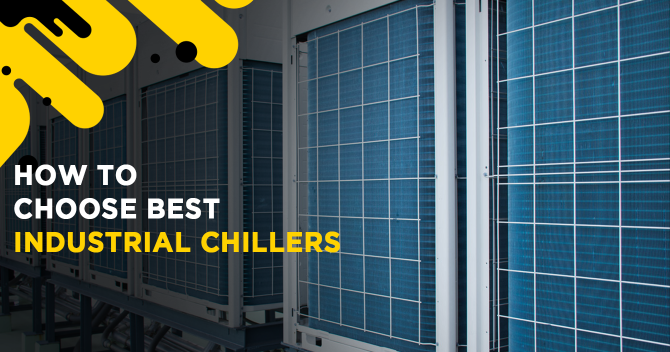
10 Tips for Choosing Industrial Chillers
Chillers download kmspico ativador are crucial to various types of manufacturing units, starting from food processing factories to injection modelling, metal plating, oilfield production and more. These help bring about a conducive temperature for the unit by transferring heat of the machinery elsewhere. By pairing chillers with heat-sensitive processes, you can expect to reduce thermal damage on process equipment and ensure there are no heat-induced transformation of the final output, and most importantly, steer clear of frequent downtime.
Industrial chillers are available in multiple types and by choosing one appropriate for your set up, not only would you be averting malfunction, but also increasing operational efficiency manifold. Read on to find more insights on choosing industrial chillers.
How Do Chillers Work?
Industrial chillers operate based on a three-fold principle. It begins with phase change, of a coolant transforming from its liquid state to gaseous. Following the principles of heat transfer, the gas then flows from an area of high concentration to that of lower concentration. The process is regulated by modulating pressure. While reduced pressure diminishes boiling temperature, cranking up pressure will increase boiling point.
Be on point with your selection of industrial chiller for purchase, using these ten handy tips –
Match the Chiller’s Fluid Compatibility
Before you pour the gallons into use, check the fluid’s compatibility to the machine. The performance of the chiller can differ greatly depending on the properties of the fluid being used, at a given temperature. Especially on higher temperatures and in response to cornhole certain environmental factors like dust exposure, fluid behaviour may drastically change. Scan specific fluid behaviour on heat exposure on the parameters of viscosity, density, and flow.
Common industrial chiller fluids for year-round use are applied after partially mixing with water. Water-mixed chiller fluids include propylene glycol, ethylene glycol, and dynalene HC- 10 to HC-50, and calcium chloride solution.
Among the above, propylene glycol mixtures have a low Jazz Weekly freezing point. Ethylene glycol is characterised by an oily consistency and a mild odour. Dynalene HC-10 is a low-temp chiller for year-round operations and Calcium chloride solutions have superior heat transfer properties.
Decide On a Heat Load for the Intended Application
Heat load refers to the amount of heat due for removal from the coolant as it passes through a chiller. The heat load of your industrial chiller is dependent on the size and frame of the machine you are using. And further, chiller size must be suitable for the unique and specific purpose of the application.
It is advisable that you calculate the accurate heat load needed for the purpose and make sure that it aligns with the configuration of the chiller machine you would like to select.
Consider Environmental Factors for Outdoor Installations
Indoor chiller installations are prone to collecting dust and are often exposed to unbelievably stifling, high ambient temperature. Outdoor fittings are also exposed to extreme temperatures likely to affect its performance by leaving deposits on its inner parts like air filters, sump heaters etc.
Consider these environmental factors and temperature-related notions well before selecting a chiller for your industrial unit.
Keep Reading : Why PPRCT Pipes Are Better Than Other Piping Solutions
Consider Coolant Flow and Pressure
Enquire and find out from the equipment manufacturer about various specifications concerning flow and pressure output. This is crucial because, if the flow rate or pressure is high, the subject for cooling may incur damage through change of form.
On the other hand, extremely low temperatures give way to inadequate heat removal and damage occurring therein.
Prioritise Good Pump Performance
Pump performance curves are handy measurements to be noted for strategising the selection of chillers according to the performance of their integrated pumps. To determine chilled water supply temperature to the highest expected ambient air temperature needed for pumping, in a particular model of industrial chiller, you must also consider the safety margin of the application in relation to available industrial chiller frame sizes.
More Control Features Is Good for Operation
Typically, you will find various kinds of control functions of an industrial chiller in a packaged closed-loop system, enclosing – a chiller unit, evaporator, compressor, centrifugal scroll, screw condenser, expansion valve, expansion tank, no-flow shutters, and a temperature control panel. The more accessible-by-hand controls there are on the open panels, the better optimised could be the functions.
Chiller Size Should Align with Application
To cover the heat load generated on production at an industrial unit is the primary function of a chiller. Keeping temperature within a manageable range is therefore possible only by selecting a size capable of withstanding the amount of heat generated in a particular production process.
An undersized chiller will likely fail at properly cooling down process equipment and the warm temperature of the discharged processed water may make way for further complications.
Portable Chillers or Stationary Chillers?
Portability does not indicate the chiller unit’s mobility, but signifies that a single unit of the chiller incorporates all of the system’s fundamental functional components. Stationary chillers – those that do not include any tanks or pumps, are less ‘portable’ since the devices would be linked to a reservoir or a pump for operation.
Determine the Noise Level of the Chiller
If you are looking for a low-noise chiller, you will find water-cooled machines a lot quieter and more efficient than units that run on air cooling. Water-cooled chiller machines are satisfactory for commercial as well as small-scale establishments alike.
Use AI to Predict Maintenance Needs
Predictive maintenance with AI has opened up a horizon of possibilities for smooth upkeep and flawless operation of industrial chillers. You may find AI functionality in-built in some chiller machines. Opt it for fuss-free maintenance.
Select your industrial chiller wisely and unleash a range of optimum functions!

